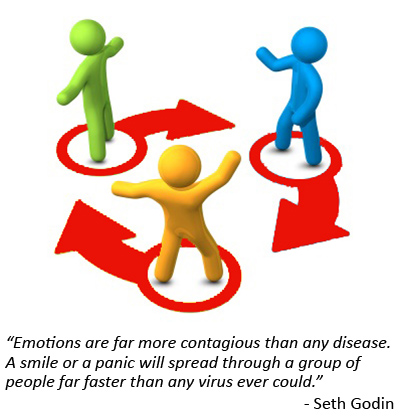Sometimes I wonder if I am being naïve. Does how we talk to one another really matter? Maybe I just pay too much attention to the news: it seems so many of us are yelling at one another (politicians and political pundits); committing mass shootings (the latest is Roseburg); imprisoning and raping women, destroying antiquities, and holding people and territory hostage (ISIS is currently emblematic). What evokes this anger and aggression?
The primitive parts of the brain are driving individuals, large groups, and even whole countries to speak with harsh words in angry tones and commit mind-boggling atrocities. Why?
Buried underneath every angry or aggressive act is the need to protect oneself, one’s position or opinion, family or country, way of life, or belief about the way things are “supposed to be.” Because we are not separate from our environment and because anger is so very contagious, it is likely that we are all being influenced to some degree by the combative global and national context in which we are living.
Although I am not in a position to influence those ranting and raving in news programs or at or outside of the United Nations, I can “think globally and speak locally” to influence conversations in positive ways at work and in my communities. I can create less threatening environments through friendly eye contact, questions of genuine curiosity, and acknowledging what others say or how they might be feeling.
When someone does get angry, do you get angry back? Or, is it possible to pause, take a breath and remember that something important to this person is either under attack or perceived as such. The soft under belly of anger is fear, self-protection, and the ever-vigilant survival mechanisms in the brain. Is it possible to stay grounded and not get provoked by someone else’s anger so you can explore what might be causing it without aggravating it?
This is where words and tone of voice make a difference. When I want to respond—not react—to someone who is angry, I create a few seconds of space in which I can calm myself by paraphrasing what she has said. “Sounds like you are upset about…because…do I have that right?” As I do this, I sense my feet on the floor and the breath in my body. Both of these help me stay connected to myself and the other person. Just doing these two things can keep anger from escalating.
And, when people are angry with me (yikes!), even though my heart starts racing, in my best moments, I notice this and ground myself by paying attention to my breath and body sensations And, I make sure I understand the origin of their anger. “You are angry with me? Please help me understand why.”
Preparation is key to being able to respond to anger instead of reacting to it. Anger does not have to be emotionally contagious.
To prepare for what you think might be a difficult conversation, take time to define a life-giving intention, for instance to listen, to not get triggered, and to stay to calm. When I am about to go into a meeting that might have some rough edges, I arrive early so I am not rushed. As I walk into the room I slow my pace and pay attention to my feet on the ground. When I take a seat, I am aware of my body resting on the chair and take a few conscious breaths.
These are some of the ways I take responsibility for the emotions I bring into a meeting. However, sometimes I get surprised and all bets are off as to whether I can interact in constructive ways. This is why I meditate: to calm the survival mechanisms in my brain so I am less likely to get afraid or angry and can calm myself more quickly. I want to avoid damaging relationships, conversations, and people’s ability to work together.
We might not be able to change the angry and aggressive environment in our world. We can, however, minimize the potential harm of anger at work and in our communities.


I think you will get a lot out of my latest post called Pain and Fear! Thank you for your support